Estimated reading time: 9 minutes
The appeal of growing fresh produce indoors attracts many different people. It's healthier, tastier, and costs less money. But oftentimes, newcomers are intimidated by the huge variety of options when trying to figure out which seeds to plant.
The majority of fruits and vegetables can be grown in buckets with a little work. However, there are a few types that are easier to grow than others. If you're new to container gardening, these fruits and veggies are a good place to start.
Note: For your convenience, I included links to tutorials for each plant.
Want to save this post for later? Click Here to Pin It on Pinterest!
1. Beans
Beans are higher in calories than most of the plants on this list, so they're a great choice for survival gardens. Be sure to choose bush bean varieties as they grow faster and don't take up as much space. Also, try some pole bean varieties if you have posts or railing in your backyard. Here's how to grow beans in containers.
2. Beets
I know not everyone likes beets, but they are very nutritious, packed with folate, manganese, vitamin B2, and antioxidants. In my opinion, they are an acquired taste, so try them a few more times. You might start to like them. They do require a lot of water, but it's worth it. Here's how to grow beets in a container.
3. Bell Peppers
Bell peppers are full of flavor and can add a little bit of flair to just about any dish. They only grow about 12-24 inches vertically and have a long growing season, which makes them beneficial is many ways. You can pick bell peppers early in the growing season, and more will grow in their place without harm to the plant.
This, coupled with the long growing season, means bell peppers have a potentially high yield of fresh produce. Here's a guide to growing bell peppers in pots.
4. Carrots
Carrots contain a huge variety of essential vitamins and nutrients. These little produce powerhouses can easily become a staple of a homegrown diet. Carrots need a larger pot than some other produce–a foot and a half all around is a good starting point.
The soil should be kept moist, but don’t allow it to become soaked. Moss can be laid on top of the soil to help retain moisture, as long as care is taken to ensure the leaves of the plant are still in the light. The secret to growing delicious carrots is to harvest them before they reach their maximum size.
Carrots lose flavor the larger they grow, so it’s a good idea to harvest them when they are between 1/2 to 3/4 of an inch in diameter. Here's how to grow carrots in containers.
5. Chard
This isn't really necessary if you're growing beets because beet greens are very similar to chard. However, if you're not growing beets, chard is a healthy addition to salads. It grows well in the spring and fall, and it is very resistant to cold weather.
Here's how to grow Swiss chard in containers.
6. Chives
Chives, while low in calories, are easy to grow and add a great deal of flavor to your home-grown arsenal. Chives need a lot of moisture, so the soil should be checked daily or at least every other day. They grow in just a few weeks and do not need much space to thrive.
Used in conjunction with your home-grown potatoes, you may have a steady supply of delicious and simple meal ingredients constantly on hand. Here's a guide to growing chives in containers.
7. Cucumber
Cucumbers are great for people with lattices porch railing. If you train the vines up them, the plant will do very well, giving you delicious cucumbers to have as a snack or in your salad. As with beans, you want to pick a bush variety, which won't take up as much space.
Here is a helpful guide to growing cucumbers in 5-gallon buckets.
8. Figs
It seems counterintuitive to try growing a fig tree indoors or in a container, but the reality is that with proper care and pruning, you can grow a tree indoors that produces a lot of fruit and doesn’t take up too much space.
These trees don’t need as much sunlight as other plants, and once grown to proper size will produce fruit annually for generations to come. Here's how to grow fig trees in containers.
9. Green Beans
Green beans are one of the fastest-growing vegetables for indoor gardening. The use of small wooden posts can allow them to grow vertically to save more space, and they make a great healthy snack that almost everyone enjoys. Green beans require very little in terms of maintenance, so long as adequate sunlight and soil moisture is maintained.
Should you choose to grow them, you can expect to have an almost non-stop supply of fresh green beans every week. If you find that one plant isn’t supplying enough, you can even cultivate a segment of the original plant into several new pots and they will grow into multiple green bean plants. Here is how to grow green beans in containers.
10. Kale
Kale is one of my favorites because it is very easy to grow throughout the entire year. Even better, it's a good cut-and-come-again plant, meaning you can cut what you need for your salad (make sure they're at least 2 inches high) and they will continue to grow and produce new leaves for you. Here is how to grow kale in containers.
11. Lemons
Lemons are surprisingly easy to cultivate indoors, so long as you are able to keep the soil moist to simulate the humid environment that they thrive in. Lemons are chock-full of vitamins and make a great addition to an array of recipes. Lemon plants can grow relatively tall, so it’s important to make sure you have enough vertical space to allow the plant to continue growing.
There are other uses for lemons besides eating. Lemons can be used as a cleaning agent or in conjunction with other cleaning agents. The juice of a lemon has powerful antibiotic properties and can be used to prevent a variety of nasty diseases. Here is how to grow lemon trees in containers.
12. Lettuce
How can you have a garden without lettuce? They are easy to grow and do well in pretty much any type of container, especially shallow containers. Looseleaf is the easiest variety to grow.
Buttercrunch is the most delicious, in my opinion. But Romaine is definitely the most nutritious. Here's a guide to growing lettuce in containers.
13. Microgreens
As the name would imply, these tiny greens need very little space and are harvested when the plant is between 2 and 3 inches tall. Microgreens can be used as a garnish for a variety of salads and meals and can help add vitamins and minerals to food.
These greens need only a small container, soil, water, and sunlight to grow, making them ideal for situations where space is limited. Here is how to grow microgreens indoors.
14. Mushrooms
Many people overlook the possibility of home-grown mushrooms. Compared to other types of produce, they can come across as mysterious and difficult to cultivate. The reality is that many strains of mushrooms are incredibly easy to grow. These fungi have evolved to be able to adapt to a wide variety of environments in nature.
Mushrooms do not need light to grow and thrive in dark, moist environments. This means you can grow mushrooms in spaces that aren’t capable of growing other types of plants. They also don’t take up much room and require very little maintenance to keep healthy. The most popular mushroom strains to grow are White Button, Oyster, and Shiitake.
Here is a video that explains how to grow mushrooms in containers.
15. Peas
Peas are a longtime favorite of mine. You don't even need to cook them, just eat them fresh out of the pod. As with most of the plants on this list, peas will require more water when grown in a bucket than they would if grown outside, as often as three times a day.
Once again, I recommend a bush variety because they don't take up as much space. Here is how to grow peas in pots.
16. Potatoes
These hearty, flavorful, calorically-dense root vegetables are the perfect addition to any indoor garden. Potatoes can be grown in a huge variety of containers, so long as there is enough vertical space for the roots to spread and for the potato buds to thrive. In fact, many people grow potatoes inside of those reusable grocery bags, which makes harvesting the buds incredibly easy.
It’s a commonly touted myth that potatoes have every nutrient needed to survive, and while that’s a bit of a stretch, this vegetable does offer an assortment of vitamins and minerals that the body needs. Potatoes on their own aren’t unhealthy, they only get a bad reputation because they are oftentimes fried or cooked in a manner that introduces a lot of extra fat. Here is how to grow potatoes in containers.
17. Radishes
These tiny root vegetables are incredibly easy to grow and take only a short period of time to go from seed to edible produce. They are resilient, so if you forget to take care of them for a few days, they will recover without any issues.
Radishes can be grown in any container with at least 12 inches of space for the roots to propagate, and they only need to be watered every other day. Here is how to grow radishes in containers.
18. Strawberries
Strawberries are fairly easy to grow. All you need is plenty of sunlight and a pot with at least 10 inches of space for them to flourish. Strawberries don’t need a lot to survive, and they grow quickly, making them an ideal fruit for growing in a container indoors or in a greenhouse.
While they grow quickly, strawberries oftentimes only bloom between mid-summer and fall. Here is a cool way to grow strawberries in a 5-gallon bucket.
19. Squash
All types of squash do well in containers. However, I would caution against vining squash unless you have plenty of railing, fencing, etc. for them to grow on. Since they require deep soil, you'll want a bucket that is at least one foot tall and one foot wide. Here is how to grow squash in containers.
20. Tomatoes
Tomatoes are often regarded as one of the easiest foods that can be grown in containers. They are incredibly versatile, able to be grown in a traditional pot or in a hanger designed specifically for tomatoes. Tomatoes are nutritious, flavorful, and above all easily grown and maintained.
The key to growing healthy tomatoes indoors is ensuring that all sides of the plant receive enough light and to keep colder temperatures from reaching them. Indoor-grown tomatoes may not reach the size of store-bought varieties, however, they will still taste delicious and are a great choice for those with limited space or time. Here is how to grow tomatoes in pots.
Like this post? Don't Forget to Pin It on Pinterest!

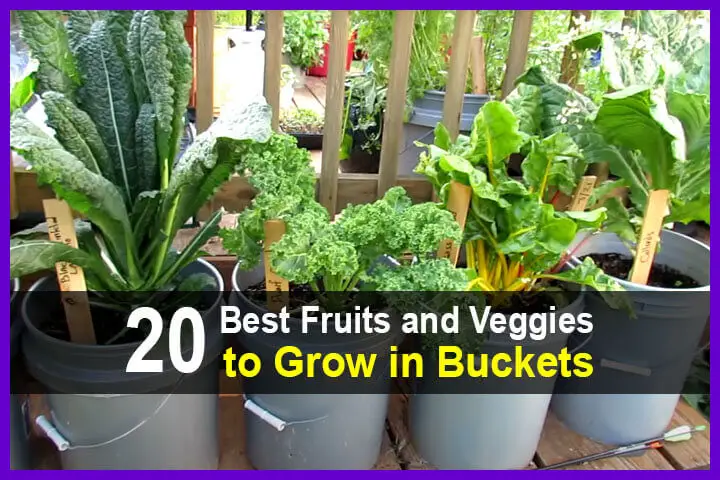


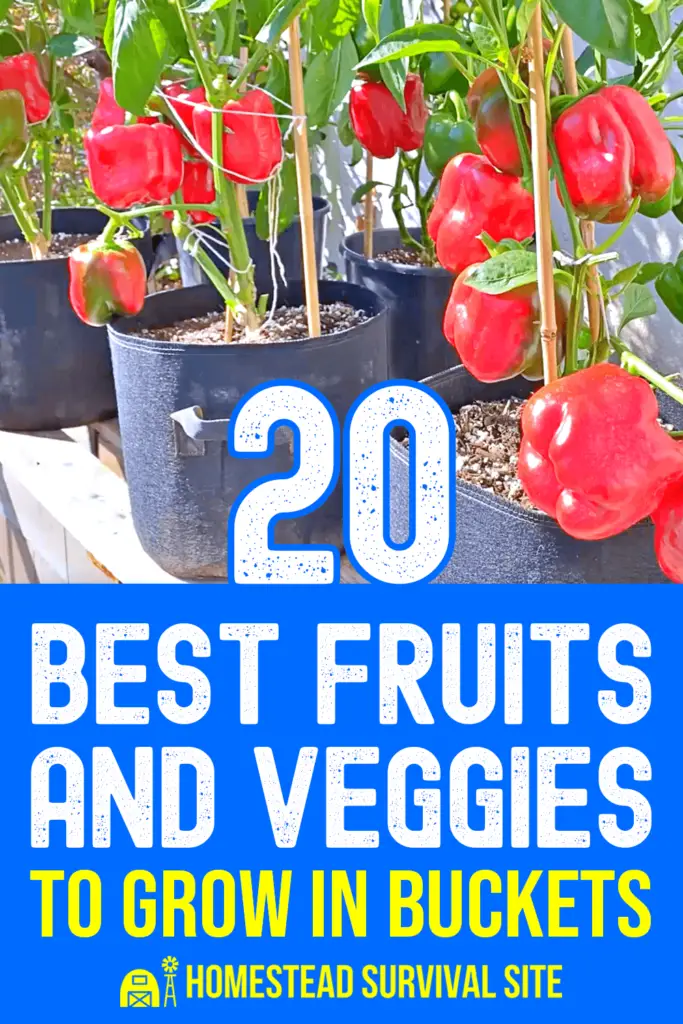

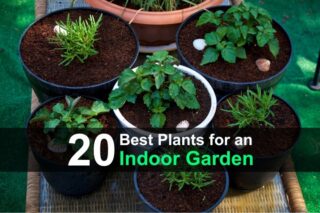
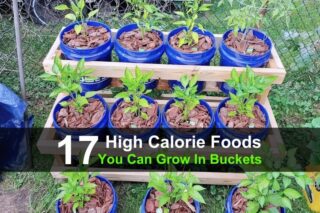
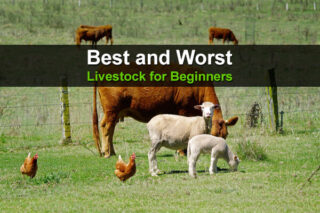

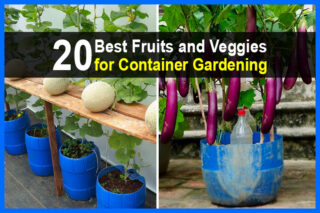

My grandpa was a self substainer, if that’s a word. He taught me a lot. But you have taught me a lot too. Thank you for sharing.